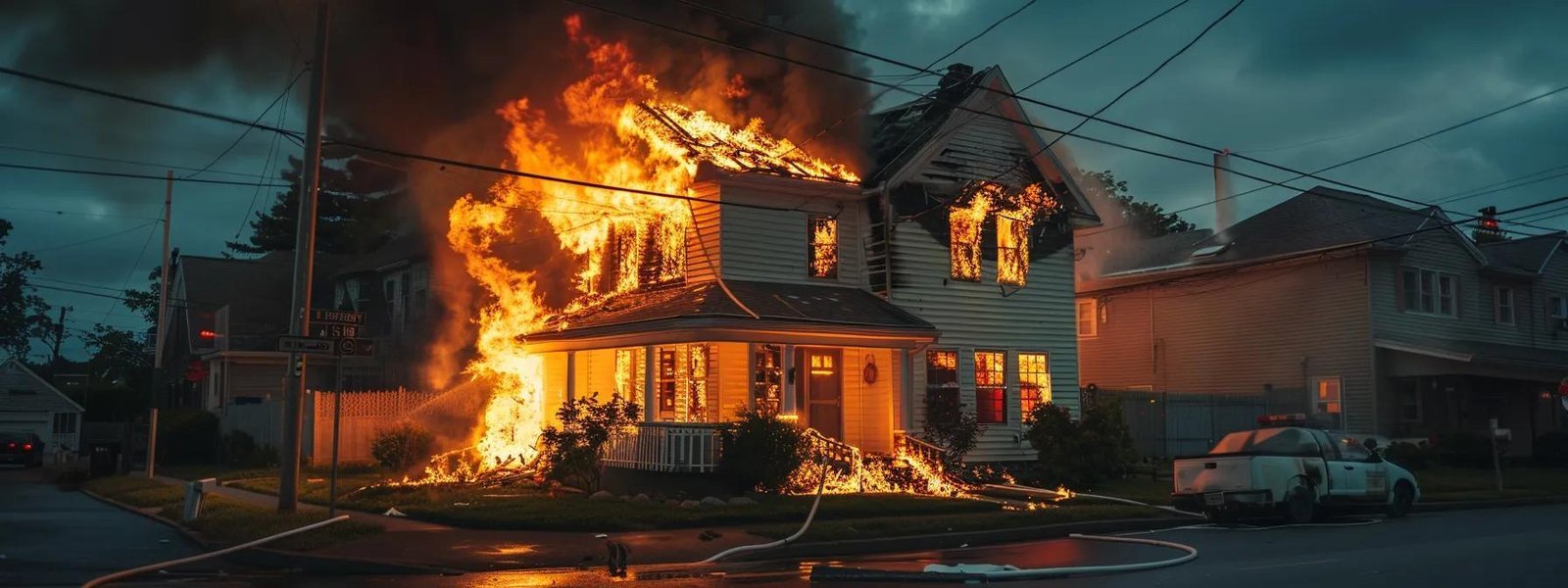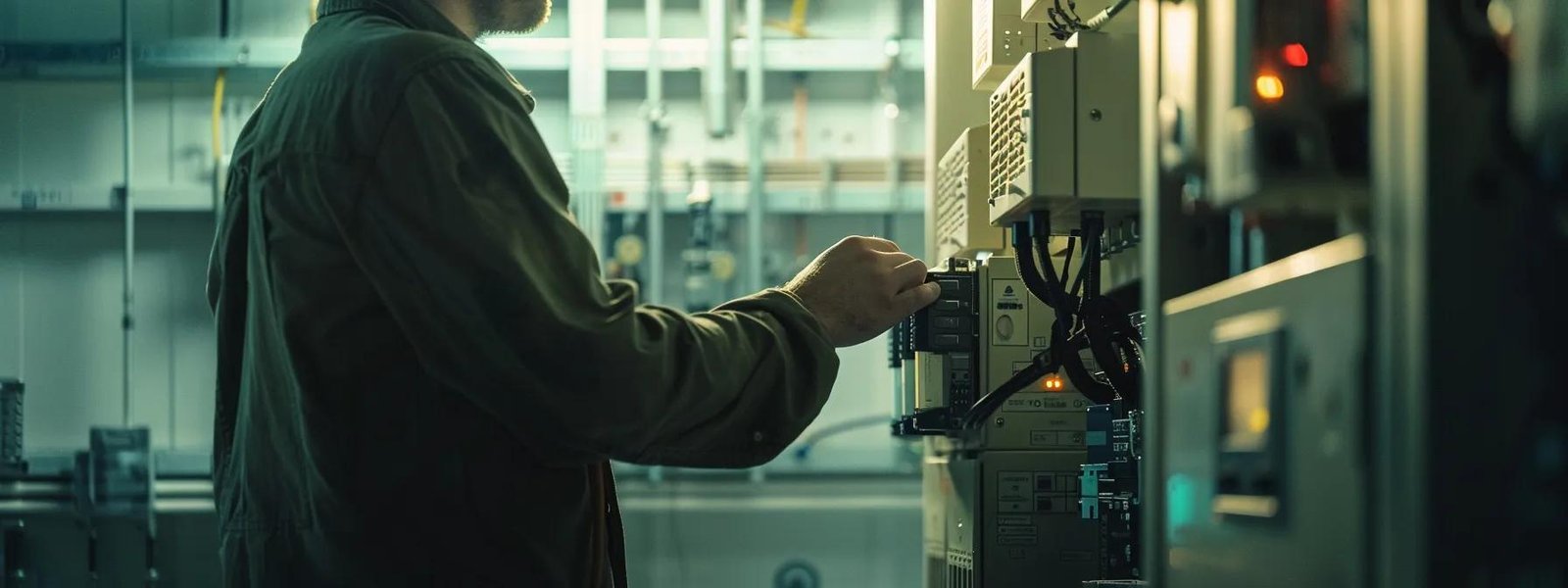
Electrical safety at home is often overlooked, yet faulty wiring can lead to serious hazards like power outages or even fires. This guide will help homeowners identify signs of faulty wiring, such as arc faults, and provide a step-by-step approach to inspecting their home’s wiring. By understanding these issues and implementing effective strategies for electrical diagnostics and hazard analysis, readers can protect their homes and families. Engaging with this content will empower homeowners to take proactive steps in ensuring their living spaces are safe and secure.

Faulty wiring poses significant risks, including electrical fires and shock hazards. These electrical hazards can disrupt daily life, leading to costly repairs and safety concerns. Ignoring issues like overloading electrical outlets can have long-term consequences. Proactive electrical maintenance, including regular electrical inspections and electrical diagnostics, helps ensure safe electric power usage and prevents faults, safeguarding homes and enhancing peace of mind.
Faulty wiring can lead to severe risks, including electrical fires and shock hazards, making fire prevention a top priority for homeowners. Issues such as frayed wires, loose connections, or outdated electrical systems can compromise the safety of the entire home electrical network. By recognizing the signs of faulty electrical wiring and implementing proactive tips, homeowners can protect their families and property from potential dangers.
Electrical hazards can significantly disrupt daily life, affecting the functionality of essential electronics and appliances. For instance, frequent tripping of a circuit breaker may indicate underlying issues such as overvoltage or faulty wiring, which can lead to costly repairs and safety risks. Adhering to the national electrical code and conducting regular inspections can help homeowners identify these hazards early, ensuring a safe and efficient living environment.
Ignoring electrical issues can lead to serious long-term consequences, including increased risk of electrical fires and shock hazards. Homeowners may find themselves facing costly repairs or even losing their homes due to fire safety violations stemming from faulty wiring. Regularly checking power cords and using a comprehensive checklist for electrical maintenance can help identify potential problems early, ensuring a safer living environment and protecting families from unnecessary risks.
Proactive electrical maintenance is essential for identifying potential electrical problems before they escalate. Regular inspections can reveal issues such as damaged electrical cables or improper voltage levels, which may lead to harmonic distortion and affect the performance of home appliances. By addressing these concerns early, homeowners can ensure a safer living environment, reduce the risk of electrical hazards, and save on costly repairs in the long run.
Common Signs of Faulty Wiring You Should Never Ignore
Homeowners should be vigilant about signs of faulty wiring to ensure electrical safety. Frequent circuit breaker trips, flickering or dimming lights, and warm or discolored outlets and switches are critical indicators of potential fire hazards. Additionally, strange odors like burning or melting and unusual sounds from electrical fixtures can signal serious issues. Recognizing these signs can help maintain a safe home environment and protect valuable home appliances.
Frequent circuit breaker trips are a clear sign of underlying issues within the electrical system. This can indicate that the circuit is overloaded, often due to high voltage demands from multiple appliances or light fixtures operating simultaneously. Homeowners should take these trips seriously, as they not only disrupt daily life but also pose a risk of injury or fire if the problem is not addressed promptly.
Flickering or dimming lights can indicate underlying electrical issues that require immediate attention from a qualified electrician. This problem may arise from overloaded circuits, especially when high-demand equipment like a clothes dryer is in use, leading to potential hazards. Homeowners should not ignore these signs, as they can compromise the effectiveness of safety devices such as smoke detectors, increasing the risk of electrical fires and other dangers.
Warm or discolored outlets and switches are clear indicators of potential electrical issues that should not be overlooked. These symptoms often suggest that there is an excessive power supply or a faulty connection, which can lead to overheating and increase the risk of electrical fires. According to the National Fire Protection Association, using extension cords improperly or overloading circuits can exacerbate these problems, making it essential for homeowners to regularly inspect their outlets and switches. If any signs of discoloration or warmth are detected, it is advisable to consult a qualified electrician to assess the situation and ensure compliance with UL standards for safety.
Strange odors, such as burning or melting, are serious indicators of an electrical fault that should never be ignored. These smells often arise from overheating wires or overloaded power strips, which can compromise electrical safety. Homeowners should take immediate action if they detect these odors, as they may signal a potential fire hazard, emphasizing the importance of following electrical safety tips and consulting a qualified electrician to assess the situation.
Unusual sounds coming from electrical fixtures can indicate serious underlying issues that require immediate attention. These noises, such as buzzing, crackling, or popping, may suggest problems with wiring or connections, which can lead to electrical failures or even fires. Homeowners should consider installing a surge protector to safeguard their appliances and ensure that any necessary electrical repairs are conducted promptly to maintain fire protection and prevent hazards, especially in areas like water heating where safety is paramount.

Before inspecting a home’s wiring, it is crucial to follow essential safety precautions to ensure a safe process. This guide will cover examining cords and wires for damage, testing outlets and switches for proper function, checking the electrical panel and fuses, and documenting findings for future reference. Each step is vital for identifying potential electrical hazards and maintaining a safe living environment.
Before starting any inspection of a home’s wiring, it is essential to prioritize safety. Homeowners should ensure that the power is turned off at the circuit breaker to prevent electrical shock. Additionally, using insulated tools and wearing rubber-soled shoes can provide extra protection while examining electrical components. Taking these precautions helps create a safer environment for identifying potential electrical hazards.
When examining cords and wires for damage, homeowners should look for visible signs such as fraying, cracking, or exposed wires. These issues can indicate potential electrical hazards that may lead to shocks or fires if not addressed promptly. Regular inspections of cords, especially those connected to high-use appliances, can help identify problems early, ensuring a safer home environment and preventing costly repairs down the line.
Testing outlets and switches for proper function is a critical step in ensuring electrical safety at home. Homeowners should use a simple outlet tester to check for correct wiring and functionality, which can reveal issues like open grounds or reversed polarity. Regular testing helps identify potential problems early, allowing for timely repairs and reducing the risk of electrical hazards such as shocks or fires.
Checking the electrical panel and fuses is a crucial step in ensuring the safety of a home’s electrical system. Homeowners should regularly inspect the panel for any signs of damage, such as rust or burn marks, which can indicate serious issues. Additionally, ensuring that fuses are not blown and that circuit breakers are functioning properly can prevent electrical hazards and maintain a safe living environment.
Documenting findings during a home wiring inspection is crucial for maintaining electrical safety. Homeowners should keep a detailed record of any issues discovered, such as damaged wires or malfunctioning outlets, along with the date of inspection. This documentation not only helps track the condition of the electrical system over time but also serves as a valuable reference for future inspections or when consulting with a qualified electrician, ensuring that all potential hazards are addressed promptly and effectively.

To prevent electrical hazards at home, homeowners should focus on several key strategies. Installing Ground Fault Circuit Interrupters (GFCIs) can protect against shock hazards. Avoiding overloading outlets and circuits is essential for safety. Proper use and placement of extension cords, along with regular professional inspections and maintenance, further enhance safety. Educating family members on electrical safety practices ensures everyone is aware of potential risks.
Installing Ground Fault Circuit Interrupters (GFCIs) is a crucial step in preventing electrical hazards in the home. These devices are designed to protect against electrical shock by quickly shutting off power when they detect an imbalance in electrical current. Homeowners should consider placing GFCIs in areas prone to moisture, such as kitchens and bathrooms, to enhance safety and reduce the risk of electrical accidents.
Avoiding overloading outlets and circuits is essential for maintaining electrical safety in the home. Homeowners should be aware of the power demands of their appliances and avoid plugging too many devices into a single outlet. For example, using multiple high-wattage devices simultaneously can lead to overheating and increase the risk of electrical fires, making it crucial to distribute electrical loads evenly across circuits.
Proper use and placement of extension cords is vital for maintaining electrical safety in the home. Homeowners should avoid using extension cords as permanent wiring solutions and ensure they are rated for the devices being powered. Additionally, cords should be placed in areas where they are not likely to be damaged, such as avoiding high-traffic zones and keeping them away from heat sources, to prevent overheating and potential fire hazards.
Regular professional inspections and maintenance are vital for ensuring electrical safety in the home. Homeowners should schedule these inspections to identify potential issues before they escalate into serious hazards. A qualified electrician can assess the entire electrical system, checking for outdated wiring, overloaded circuits, and other risks, ultimately providing peace of mind and safeguarding the home from electrical fires and shock hazards.
Educating family members about electrical safety practices is essential for preventing electrical hazards at home. Homeowners should take the time to explain the importance of recognizing signs of faulty wiring, such as flickering lights or warm outlets. By fostering an understanding of safe practices, such as not overloading outlets and using appliances correctly, families can work together to maintain a safe living environment.

Recognizing problems that go beyond DIY solutions is crucial for maintaining electrical safety at home. Homeowners must understand local electrical codes and regulations to ensure compliance. Selecting a qualified and licensed electrician is essential for effective repairs. Preparing the home for professional electrical work and knowing what to expect during an electrical service call can streamline the process and enhance safety.
Homeowners should recognize when electrical problems exceed DIY capabilities, as certain issues can pose serious safety risks. Signs such as persistent flickering lights, frequent circuit breaker trips, or burning odors indicate underlying faults that require professional attention. Consulting a licensed electrician ensures compliance with local codes and provides the expertise needed to address complex electrical issues effectively:
Understanding local electrical codes and regulations is essential for homeowners to ensure their electrical systems are safe and compliant. These codes provide guidelines on proper wiring practices, installation standards, and safety measures that must be followed to prevent electrical hazards. Homeowners should consult a licensed electrician who is familiar with these regulations to address any issues, ensuring that all repairs and installations meet the required safety standards.
Selecting a qualified and licensed electrician is crucial for ensuring the safety and reliability of a home’s electrical system. Homeowners should look for professionals with proper credentials, experience, and positive reviews to guarantee quality service. A licensed electrician not only adheres to local electrical codes but also brings expertise in identifying and resolving complex electrical issues, providing peace of mind and safeguarding the home from potential hazards.
Preparing a home for professional electrical work is essential to ensure a smooth and safe process. Homeowners should clear the area around electrical panels, outlets, and fixtures to provide easy access for the electrician. Additionally, it is advisable to inform family members about the scheduled work to minimize disruptions and maintain safety during the service call:
During an electrical service call, homeowners can expect a thorough assessment of their electrical system by a qualified electrician. The electrician will begin by discussing any specific concerns, such as flickering lights or frequent circuit breaker trips, and then proceed to inspect outlets, switches, and the electrical panel for any signs of damage or wear. This professional evaluation not only identifies existing issues but also provides recommendations for necessary repairs or upgrades, ensuring the home remains safe and compliant with local electrical codes.

Creating an ongoing electrical safety plan for the home involves several key components. Scheduling regular maintenance checks ensures that any potential issues are identified early. Keeping emergency numbers accessible provides peace of mind in case of electrical emergencies. Updating old wiring systems and incorporating safety devices enhance overall safety. Continually educating oneself on electrical safety practices is essential for maintaining a secure living environment.
Scheduling regular maintenance checks is a vital component of an effective electrical safety plan for any home. Homeowners should aim to have a qualified electrician conduct inspections at least once a year to identify potential issues before they escalate into serious hazards. These proactive measures not only enhance safety but also ensure that the electrical system operates efficiently, reducing the risk of costly repairs and electrical failures in the future.
Keeping emergency numbers accessible is a critical component of an effective electrical safety plan. Homeowners should compile a list of important contacts, including local electricians, fire departments, and emergency services, and display it prominently in their homes. This ensures that in the event of an electrical emergency, such as a fire or shock hazard, immediate assistance can be obtained, minimizing potential damage and enhancing safety.
Updating old or outdated wiring systems is a critical step in maintaining electrical safety at home. Homeowners should be aware that older wiring may not meet current safety standards, increasing the risk of electrical hazards such as fires and shocks. Consulting a qualified electrician to assess and upgrade wiring can significantly enhance safety, ensuring that the electrical system can handle modern power demands while providing peace of mind for families.
Incorporating safety devices and technologies is a vital aspect of an ongoing electrical safety plan for any home. Homeowners should consider installing Ground Fault Circuit Interrupters (GFCIs) in areas prone to moisture, such as kitchens and bathrooms, to prevent electrical shocks. Additionally, surge protectors can safeguard appliances from voltage spikes, while smoke detectors and carbon monoxide alarms enhance overall safety by providing early warnings of potential hazards.
Continually educating oneself on electrical safety is vital for homeowners to effectively prevent electrical hazards. Staying informed about the latest safety practices, such as recognizing signs of faulty wiring and understanding the importance of regular inspections, empowers homeowners to maintain a safe living environment. Engaging in workshops, reading reliable resources, and consulting with qualified electricians can enhance knowledge and ensure that families are well-prepared to address potential electrical issues promptly.
Identifying faulty wiring and preventing electrical hazards at home is crucial for ensuring the safety and well-being of families. Homeowners must remain vigilant for signs of electrical issues, such as frequent circuit breaker trips and warm outlets, to address potential dangers promptly. Regular inspections and proactive maintenance can significantly reduce the risk of electrical fires and shock hazards. By prioritizing electrical safety, homeowners can protect their property and enhance their peace of mind.


